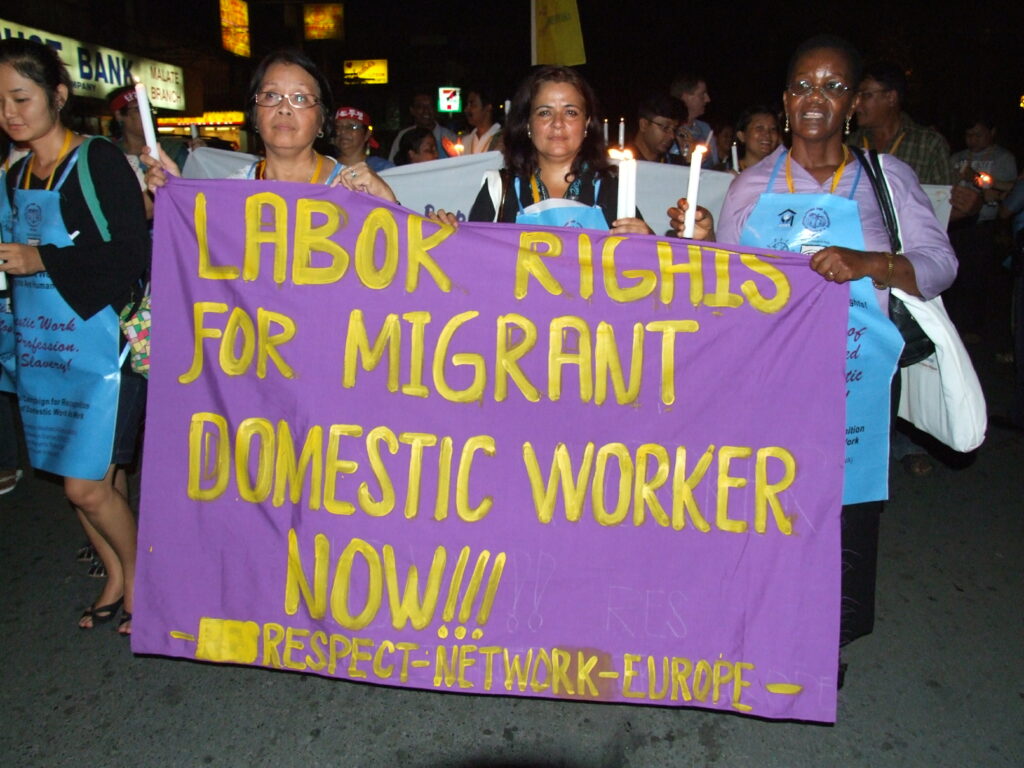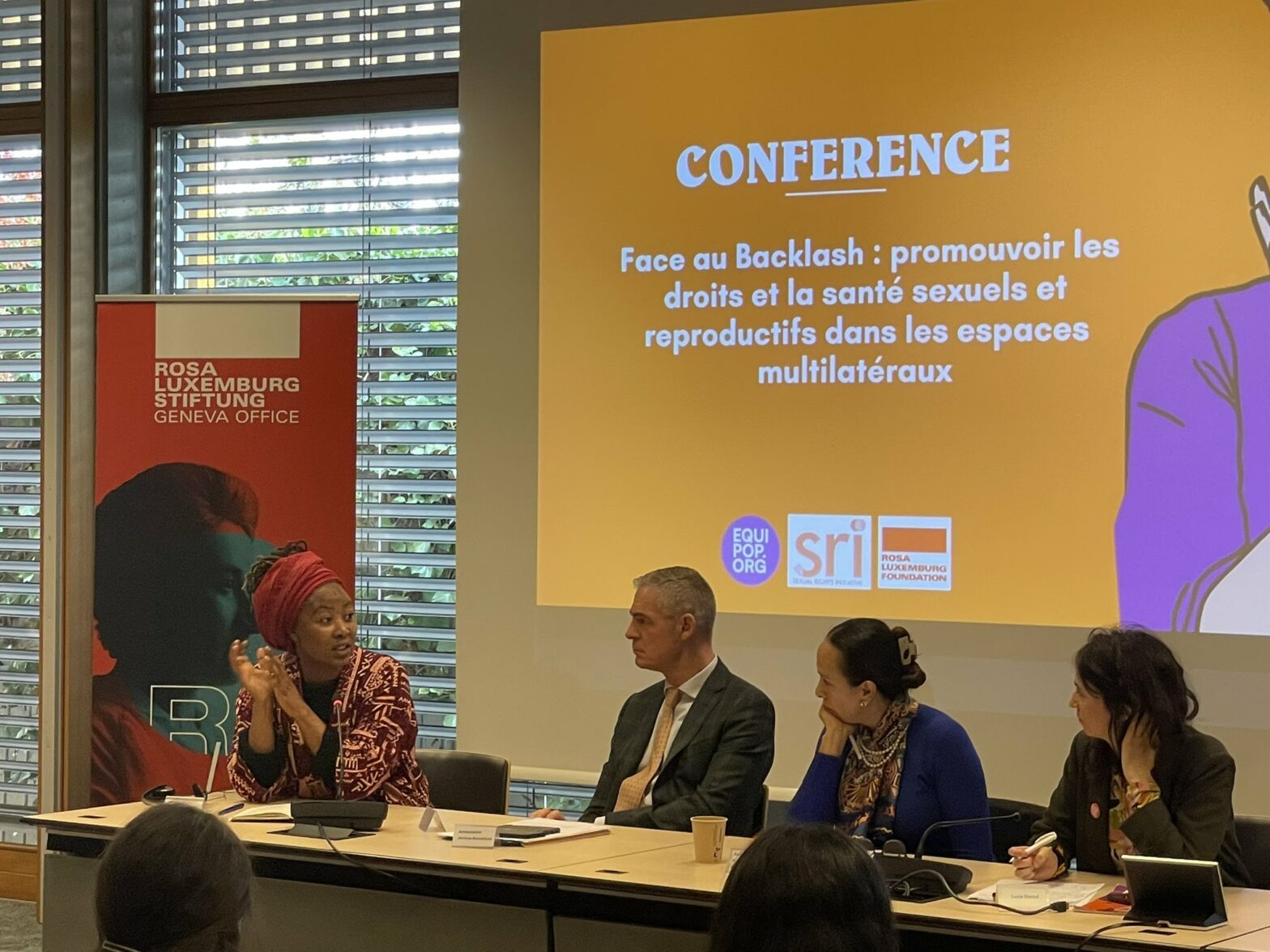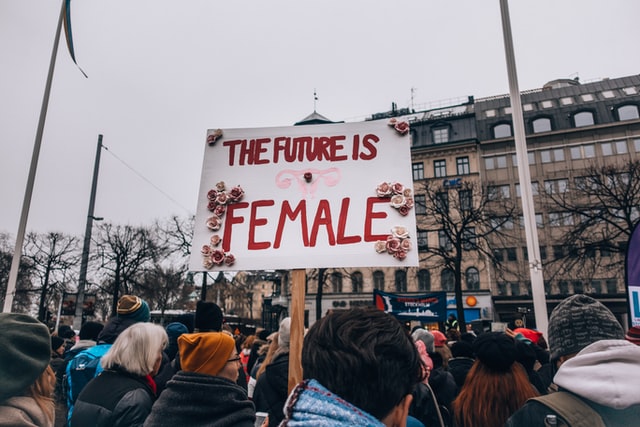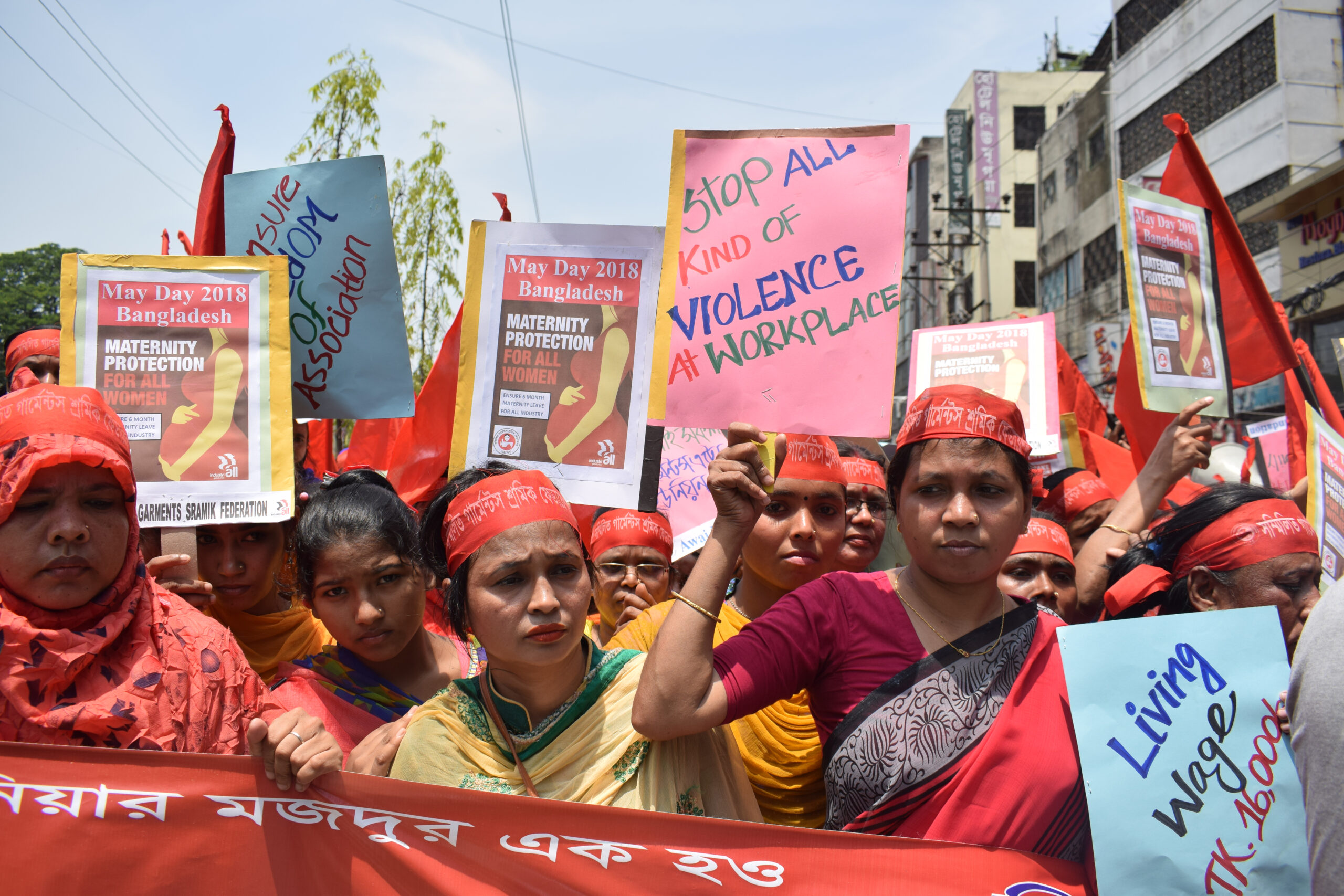Partager Twitter Facebook Email Copy URL
Building on Convention 189 one decade on – en anglais !

Ten years since its official adoption, the domestic workers’ movement continues to cherish the International Labour Organization’s Convention on Domestic Work 189 (ILO C189), for it represents the fruit of the effort of many workers around the world. Described as an avant-garde convention with revolutionary potentials for recognizing domestic work as the work that makes all other forms of work possible, and therefore to understand it as essential, indispensable, and valuable, this convention was years in the making.
During the first Domestic Workers International Conference in 2006 in the Netherlands, domestic workers were approached by ILO Gender Specialists to brainstorm ideas on how to bring collective realities closer to one another, backed by international commitment. The idea to have a convention for domestic workers came to be and flourished, with trade union and organizational support for fundraising and other activities to bring together domestic workers again in 2008. The International Domestic Workers Network (IDWN) was formed and pushed for representation in ILO negotiations around the Convention. The IDWN later transformed into the International Domestic Workers Federation (IDWF). The peculiarity of the convention was also reflected in the unprecedented workers participation in the ILO negotiations. Myrtle Witbooi, first president of the IDWF, said the workers were going to “rock the UN building”—and they did with their chants, songs, rigor, and power.
Nevertheless, as conventions are the products of negotiations, certain demands were left out from the body of the text and pushed towards recommendations. Our constituencies were active participants and witnesses to the conversations left unfinished and points of tensions reflected in the negotiations of the Convention. This article presents an overview of these gaps and their influence on domestic workers organizing and mobilizing using the convention. From regional gaps at the time of its inception, to the political environment dictating lines of agreements and disagreements, to blatant conflicts of interests: some tensions must be reopened to bring the C189 to its full potential, translating the spirit in which it was proposed and adopted. For the purposes of this article, we limit our discussion to diplomatic immunity, demographic concerns in defining lawful domestic work, and working conditions especially as the pandemic continues to unravel.
Diplomatic Immunity: A Silent Hinderance to Workers’ Rights
Diplomatic immunity is the legal privilege that exempts diplomats and their immediate family members from criminal prosecution and most civil actions in the country of their deployment. It dates to the Vienna Convention on Diplomatic Relations of 1961, which is designed to protect diplomatic agents from the receiving state so they can perform their duties without hindrance. Diplomatic immunity is also only as strong as it is abided by in both countries, as it is a two-way street: if a state does not protect the foreign diplomat on its land, they will have no guarantees of the immunity of their own diplomat abroad.
Immunity thus operates along a balance of powers and the vested interests in it, making it increasingly difficult to address regardless of how flagrant the breaches of rights that diplomats commit may be. In the event of misconduct, only the sending state has the power to call back their diplomat and remove them from the mission and/or waive their diplomatic immunity.
Although it is often said that diplomatic immunity is not a carte blanche to conduct diplomatic misconduct, the fragmented and uncertain scope of the application of international law vis-à-vis state and diplomatic immunity increases the uncertainty for domestic workers who seek retribution for abuse at the hands of diplomats and their families. It undermines the progress made in relation to labour laws in the sector: where space for gradual litigative pursuit of justice expands as domestic workers fight against abuse and unionize, it shrinks for those employed by diplomats and international civil servants.
While migration is built around a triangular relationship between a migrant, a sending state, and a receiving state, these relationships are uneven. They are particularly uneven when the relationship with the migrant is trumped by states safeguarding their good diplomatic relations. This constitutes a specific protection gap suffered by domestic workers in the households of diplomats, for not only is their immigration status tied to their employer, complicating the litigative process, but moreover, their litigative prospects are minimal due to their employer’s diplomatic immunity. Both the state and the employer can push back with immunity claims: the state through invoking international law, and the diplomat themselves through the 1961 Vienna Convention on Diplomatic Relations (VCDR).
Domestic workers who would have otherwise been able to pursue a legal process find their hands tied in face of their employer’s diplomatic immunity, which reflects a dissonance or fragmentation of international law. On the one hand, international law seeks to safeguard labour standards and protect migrant workers through the landmark 2011 International Labour Organization (ILO) Domestic Workers Convention, the UN Committee on the Elimination of Discrimination Against Women (CEDAW) General Recommendation on Women Migrant Workers, and the General Comment on Migrant Domestic Workers from the UN Committee on the Protection of the Rights of All Migrant Workers and Members of Their Families. Yet despite a brief discussion on diplomatic immunity in relation to domestic workers’ labour rights, the conversation was posed in favour of international law’s mission to safeguard diplomatic relationships between states. Diplomatic immunity continues to pose a challenge to the rights of domestic workers and their protection as a result.
Relativism or Purposeful Exclusion: Contestation of Au Pairs and Minimum Age
Beyond governmental reluctance to understand domestic workers as workers within multiple national labour laws, there are layers to who qualifies as a domestic worker in the eye of the law. This distinction is based not only on the status of documentation, but also on the form of the travel arrangement in the context of migration. For example, au pairs—young women who migrate to Europe and perform domestic and childcare services in exchange for room, food, and sometimes money—remain outside of the Convention’s scope. A legal framework to regulate the phenomenon exists: the Council of Europe’s 1969 European Agreement on Au Pair Placement, but it is not a strong enough mechanism.
When the conversation around au pairs was picked up in the negotiations of ILO C189, it did not receive resonance. Europe has a comparatively comprehensive welfare system. Contrary to the assumption that such privilege would positively reflect within the negotiations to pressure for more rights for domestic workers, it reflected in European Union states’ pressure against the inclusion of au pairs within the language of formalized domestic work. Similarly, European state representatives were reluctant to include undocumented workers because once included, social protection would encompass them.
During the conversation, conflicts of interest were visible among the states. The Philippines, which has a ban on au pair migration to countries with no bilateral agreement, was in favour of including provisions on au pairs within the Convention, while Asia in general looked to Singapore for leadership on the matter. Thailand, a country with hardly any au pair migration, abstained from the vote.
This plethora of influence reflects the vested governmental interests in the conversation, and not the righteousness of the demand itself. It also reflected the political environment of the negotiating states: the MENA representatives were not supportive of comprehensive reforms of labour laws in relation to domestic work, reflecting a predominant reluctance to change the status quo prior to the wave of upheavals that took over the region with the Arab Spring. After that moment, reform became a more probable endeavour, as seen through the openings in the political environment. Furthermore, some countries, namely Qatar, have taken steps towards improving the conditions of domestic workers.
Another demographic concern in relation to the binary of inclusion/exclusion of workers was their age. While Article 4 of C189 stipulates that the worker’s age must be “consistent with the provisions of the Minimum Age Convention, 1973 (No. 138), and the Worst Forms of Child Labour Convention, 1999 (No. 182), and not lower than that established by national laws and regulations for workers generally”, its relegation to national minimums is insufficient. The same article stipulates that the employment of those under 18 must not pose a threat to their current or future education.
However, the reality falls short of this stipulation: once people below the age of 18 enter the workforce, continuous education becomes difficult, to say the least, as the reasons that drove them to enter domestic work remain in place while opportunities to pursue education and vocational training decrease. Without a universally standardized binding age, it is difficult to call out malpractice, or practices that conforms with national laws on the surface but end up reproducing situations of precarity for workers and their families.
Working Conditions: Tensions between Accessibility and Effectiveness
Although people are more likely to suffer injury or disease within their workplaces than by coincidence outside of their work, especially when they work long hours as is usually the case in the informal economy, operational health and safety has rarely taken workers in the informal economy into consideration. Domestic workers are no exception, especially since their workplace is someone else’s private house. “Employer organizations, in particular, were resistant to OHS”, community organizers who participated in the negotiations reported. “It is a conflict of interests.”
Article 13 of C189 thus was set to ensure that “every domestic worker has the right to a safe and healthy working environment”, as to bind member states to act on OHS for domestic workers and the specific characteristics of their work environment in accordance with national laws. Again, the relegation to national standards was a compromise made to universalize the Convention and boost states’ willingness to ratify, for pragmatism at times trumps the transformative potentials of international instruments.
As a sector that seeks regularization to counter the lack of protection experienced across the board due to the high levels of invisibility, privacy, and informality, fair wages are an important component of the plight of the workers. Not only are wages for domestic workers minimal and often below national minimum wages, but sometimes they are paid “in-kind”. While domestic workers lobby for social protection including fair and decent wages, the monetary aspect of such wages was a point of tension in the discussion of the Convention. The second part of Article 12 stipulates that in-kind payments are lawful when in line with national laws, regulations, collective agreements, or arbitration awards, and when such payment is agreed upon by the worker and its monetary attribution is reasonable and fair. In the absence and/or insufficiency of national regulations on the matter, the quality control of such in-kind payments remains lacking.
An additional ethical dilemma also emerged: if in-kind payments were to be outlawed, were people who would nevertheless be performing domestic services for in-kind payments be made more vulnerable? If the only available payment is of an in-kind nature, refuting its “legitimacy” as compensation might decrease the worker’s access to the rest of the rights outlined in the convention, as the worker would be understood as performing labour in exchange for a gift, not in an employment relationship.
The dilemma brings us back to the central and most important gain of domestic workers’ organizing and C189, which is recognizing domestic work as work, and domestic workers as workers. As basic as it sounds, this legitimizing discourse bears transformative potentials for a sector that inherited multitudes of laws and regulations from the slavery and discrimination reproduced by racial capitalism. C189 is important in outlining working conditions for many, even when it has not been ratified by the country in question. For example, despite Middle Eastern countries seldom ratifying conventions, and the difficulty of domestic workers’ organizing under the sponsorship system, the provisions and rights outlined in C189 are a demand on every worker’s tongue, especially when it comes to OHS under COVID-19.
Workers are fighting for the ratification of C189, but at the same time “they are also with employers and with policy makers, to benefit with direct change”, Vicky Kanyoka says about the Africa region. Even when using the convention in its entirety is difficult due to unfavourable political environments, workers have crafted contracts, negotiated the terms of their employment, and informed their fellow workers about the rights they can aspire to, as made possible by collective organizing.
Conclusion
While C189 has its points of tension and is used differently across contexts, it constitutes a monumental victory for domestic workers’ everywhere. Even in contexts where its ratification is difficult in the absence of political will, its major gain is its most basic ethos: domestic work is work. In regions where the dominant norm considers domestic workers to be “servants” as a legacy of feudal times and persistent racial capitalism, the Convention’s strongest message is to reiterate that domestic workers are workers like any other.
Domestic workers’ organizations in Asia, for example, have faced resistance to their inclusion in some trade unions due to the de facto difference of the sector. Prior to C189, most trade unions in the region did not have domestic workers in their membership. Fish Ip, community organizer and IDWF Asia Pacific Regional Coordinator, says: “The process gave a platform for us in Asia to bring trade unions to the table for the first time. It helped us gather trade union support as the recognition of Domestic Workers as workers was the first step.”
A decade later, a lot has changed, and a lot needs to be changed. Workers’ unionizing won this unprecedented international instrument, and it has the power to resolve these tensions and be the driving force behind the change we want to see in this world.
This article uses the insights of Fish Ip and Vicky Kanyoka, the Asia Pacific and Africa Regional Coordinators at IDWF. Both have been part of the organizing for the adoption of the Convention and have first-hand experience of the community organizing and negotiations that led up to C189. Although IDWF did not have affiliated workers in the Middle East and North Africa at the time of the negotiations, I sought input from the MENA Regional Coordinator Lara Nuwayhid to assess whether this has influenced the willingness and effectiveness of workers organizing around the convention.
Roula Seghaier is the Strategic Program Coordinator at the International Domestic Worker Federation (IDWF). The article was first published on rosalux.de.



